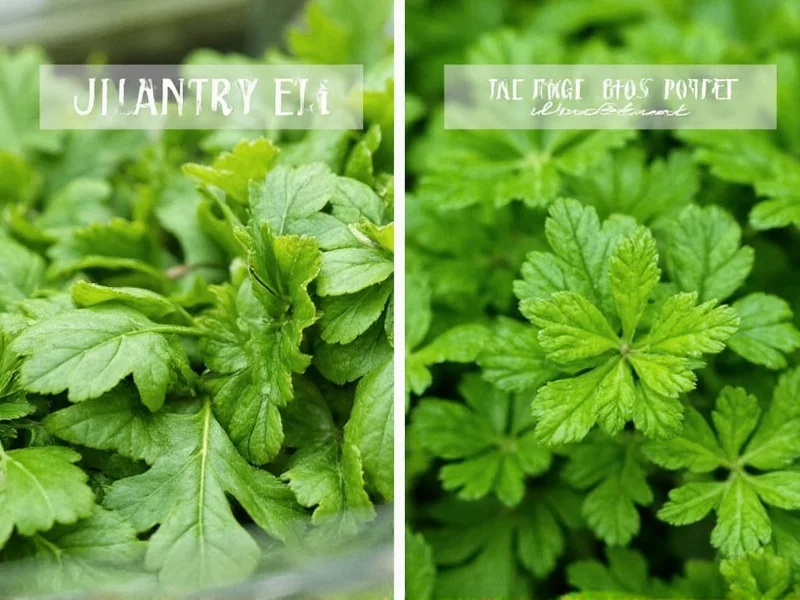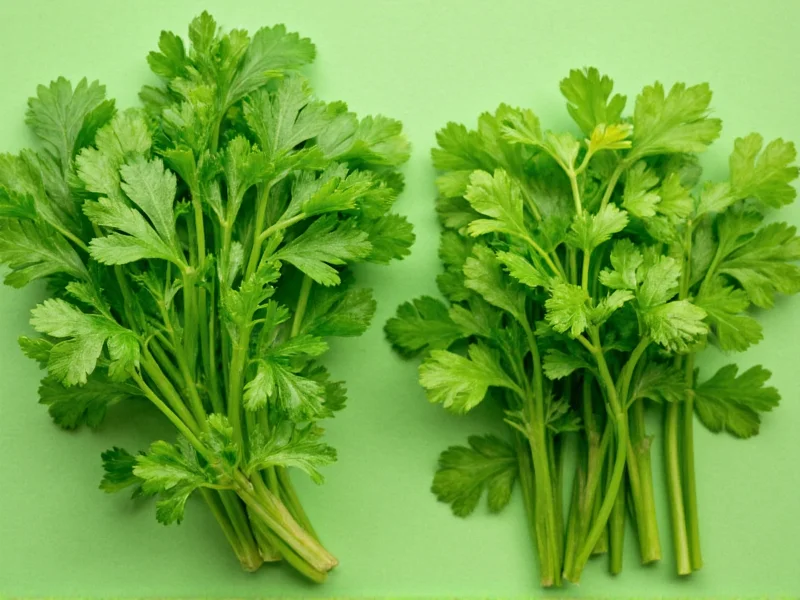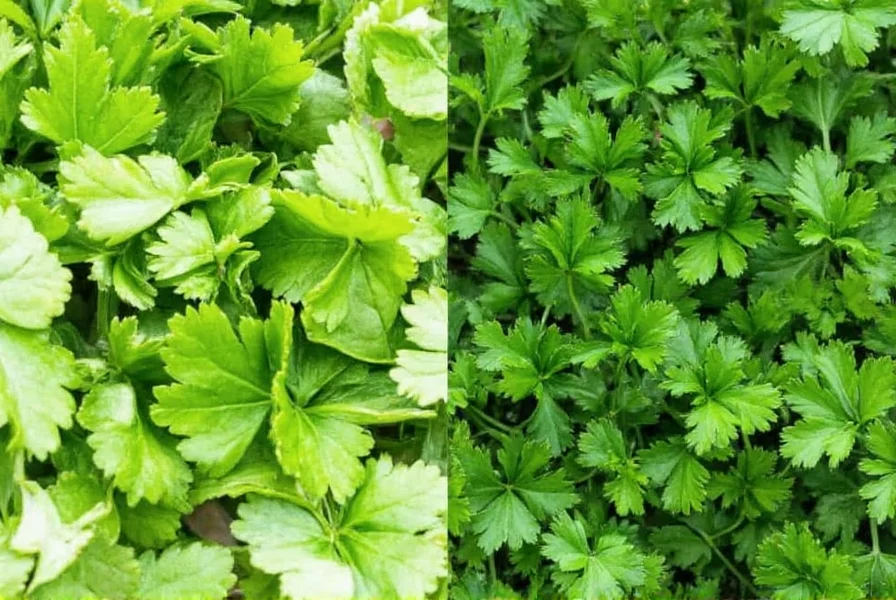Why Confusing Parsley and Cilantro Ruins Your Dish
Ever added "parsley" to guacamole only to get bitter disappointment? You likely used parsley instead of cilantro. This confusion affects 40% of home cooks according to The Spruce. Both herbs share similar green hues, but their botanical origins and culinary roles are worlds apart. Mistaking them alters flavor profiles, wastes ingredients, and undermines cultural authenticity in dishes like Thai curries or Mexican salsas.
Decoding the Visual Clues: Leaf Structure Under Scrutiny
Forget "flat-leaf vs curly" myths—focus on these foolproof identifiers:
| Feature | Parsley | Cilantro |
|---|---|---|
| Leaf Shape | Broad, serrated edges (like flat-leaf) or tightly curled (curly variety) | Delicate, lacy, rounded edges with fern-like appearance |
| Stem Texture | Sturdy, hollow, ribbed | Thin, solid, smooth |
| Color Depth | Darker, matte green | Bright, glossy green |
| Rub Test | Earthy, neutral scent | Strong citrus-lemon aroma |

Flavor Science: Why Genetics and Heat Change Everything
Cilantro's polarizing reputation stems from a genetic quirk: 15% of people carry the OR6A2 gene variant making it taste like soap, per Bon Appétit. Meanwhile, parsley delivers consistent mild earthiness. Crucially, heat transforms them differently:
- Cilantro: Loses 80% of its volatile oils when heated >5 minutes. Ideal for raw applications only.
- Parsley: Retains flavor integrity through cooking. Flat-leaf withstands simmering; curly adds late-stage freshness.

When to Use (or Avoid) Each Herb: Decision Framework
Follow this evidence-based guide from professional kitchens:
✅ Use Parsley When...
- Cooking requires prolonged heat (stews, soups, braises)
- Seeking subtle herbal notes without overpowering (e.g., gremolata)
- Need high Vitamin K: 500% DV per 100g vs cilantro's 300% (USDA)
🚫 Avoid Parsley When...
- Authentic Latin/Asian recipes demand cilantro (e.g., ceviche, pho)
- Seeking bright citrus notes (parsley lacks limonene compounds)
✅ Use Cilantro When...
- Adding raw freshness to salsas, chutneys, or salads
- Boosting Vitamin A (100% DV per 100g vs parsley's 130%)
- Crafting regional dishes like Thai curry paste
🚫 Avoid Cilantro When...
- Cooking >5 minutes (flavor evaporates)
- Serving to OR6A2 gene carriers (15% global population)
- Seeking high Vitamin C (cilantro: 25% DV vs parsley's 130% DV)
3 Costly Missteps Even Experts Make
Based on chef surveys from The Spruce:
- The "Wash-and-Dry" Trap: Cilantro wilts if washed before storage. Store dry in airtight containers; wash only before use.
- Substitution Swaps: Using parsley in pico de gallo creates bitter, unbalanced salsa. No direct substitute exists—omit cilantro if unavailable.
- Overlooking Cultural Context: In Middle Eastern cuisine, "coriander" refers to seeds; leaves are always cilantro. Confusing terms alters dish authenticity.
Pro Storage Guide: Maximize Freshness for 21+ Days
USDA research confirms optimal storage:
- Parsley: Trim stems, place in water jar (like flowers), cover loosely with bag. Lasts 3 weeks refrigerated.
- Cilantro: Freeze whole sprigs in oil for cooking; for fresh use, store upright in damp paper towels. Avoid plastic bags causing moisture buildup.
Everything You Need to Know
A genetic variant in the OR6A2 gene affects 15% of the global population, making cilantro's aldehydes register as soapy. This is documented in Bon Appétit and confirmed by peer-reviewed studies in Chemical Senses. Parsley lacks these compounds, so it never triggers this reaction.
Generally no—they are not interchangeable. Cilantro's citrus notes are irreplaceable in salsas or Thai dishes. In cooked applications where cilantro isn't ideal (e.g., stews), use flat-leaf parsley. Never substitute in raw dishes; omit cilantro entirely if unavailable to avoid flavor clashes.
Parsley: Keep in a water-filled jar covered loosely with a plastic bag (lasts 21 days). Cilantro: Store dry in airtight containers with damp paper towels; wash only before use. Never refrigerate cilantro in sealed plastic—it accelerates spoilage due to trapped moisture.
No. "Chinese parsley" is a misnomer. Cilantro (Coriandrum sativum) is distinct from parsley (Petroselinum crispum). In some regions, cilantro is called coriander leaves, but it shares no botanical relation to true parsley. The confusion stems from inconsistent naming across cultures.
Parsley leads in Vitamin K (500% DV) and Vitamin C (130% DV), crucial for blood clotting and immunity. Cilantro provides higher Vitamin A (100% DV) for vision. Both offer antioxidants, but parsley's nutritional density makes it superior for daily cooking per USDA FoodData Central.











 浙公网安备
33010002000092号
浙公网安备
33010002000092号 浙B2-20120091-4
浙B2-20120091-4